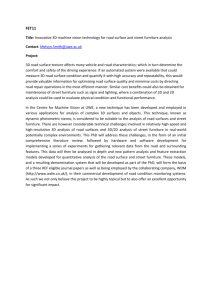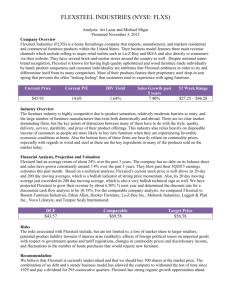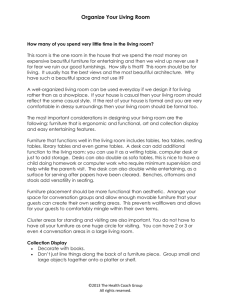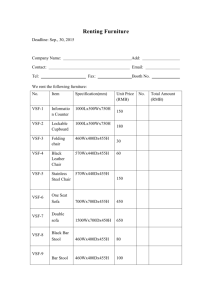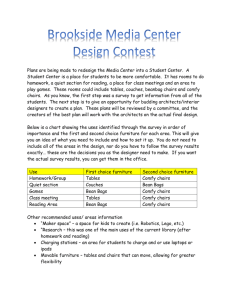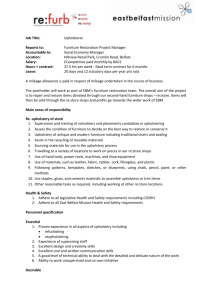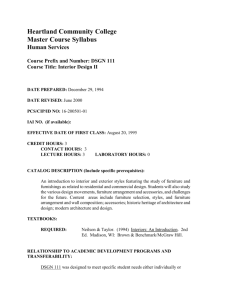Classroom Design- Furniture - NC Early Learning Network Training
advertisement
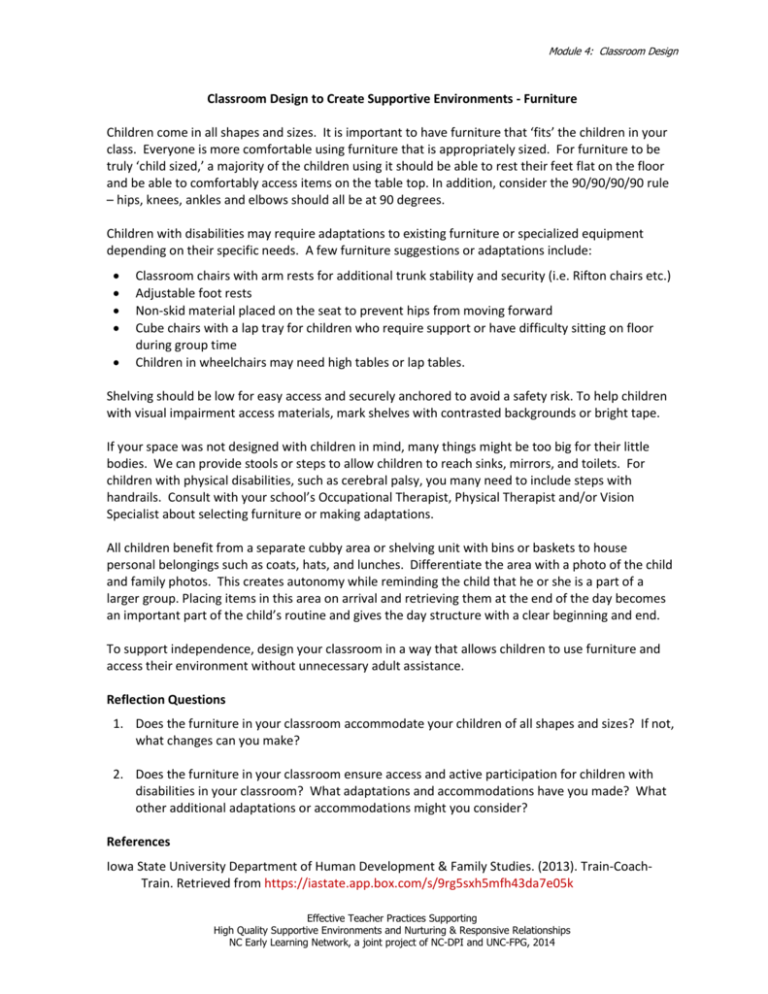
Module 4: Classroom Design Classroom Design to Create Supportive Environments - Furniture Children come in all shapes and sizes. It is important to have furniture that ‘fits’ the children in your class. Everyone is more comfortable using furniture that is appropriately sized. For furniture to be truly ‘child sized,’ a majority of the children using it should be able to rest their feet flat on the floor and be able to comfortably access items on the table top. In addition, consider the 90/90/90/90 rule – hips, knees, ankles and elbows should all be at 90 degrees. Children with disabilities may require adaptations to existing furniture or specialized equipment depending on their specific needs. A few furniture suggestions or adaptations include: Classroom chairs with arm rests for additional trunk stability and security (i.e. Rifton chairs etc.) Adjustable foot rests Non-skid material placed on the seat to prevent hips from moving forward Cube chairs with a lap tray for children who require support or have difficulty sitting on floor during group time Children in wheelchairs may need high tables or lap tables. Shelving should be low for easy access and securely anchored to avoid a safety risk. To help children with visual impairment access materials, mark shelves with contrasted backgrounds or bright tape. If your space was not designed with children in mind, many things might be too big for their little bodies. We can provide stools or steps to allow children to reach sinks, mirrors, and toilets. For children with physical disabilities, such as cerebral palsy, you many need to include steps with handrails. Consult with your school’s Occupational Therapist, Physical Therapist and/or Vision Specialist about selecting furniture or making adaptations. All children benefit from a separate cubby area or shelving unit with bins or baskets to house personal belongings such as coats, hats, and lunches. Differentiate the area with a photo of the child and family photos. This creates autonomy while reminding the child that he or she is a part of a larger group. Placing items in this area on arrival and retrieving them at the end of the day becomes an important part of the child’s routine and gives the day structure with a clear beginning and end. To support independence, design your classroom in a way that allows children to use furniture and access their environment without unnecessary adult assistance. Reflection Questions 1. Does the furniture in your classroom accommodate your children of all shapes and sizes? If not, what changes can you make? 2. Does the furniture in your classroom ensure access and active participation for children with disabilities in your classroom? What adaptations and accommodations have you made? What other additional adaptations or accommodations might you consider? References Iowa State University Department of Human Development & Family Studies. (2013). Train-CoachTrain. Retrieved from https://iastate.app.box.com/s/9rg5sxh5mfh43da7e05k Effective Teacher Practices Supporting High Quality Supportive Environments and Nurturing & Responsive Relationships NC Early Learning Network, a joint project of NC-DPI and UNC-FPG, 2014


